The Background :
Some of my fondest memories in my childhood was making chicken enchiladas with my family. As a child my mother would tell my siblings and I that it was my father’s favorite dish and how she made it out of love.
The story has it that when my mother first took my father to meet the family back home in Arizona my tias made chicken enchiladas. My father loved them so much that he requested my mother to get the recipe before they returned back to California. From that point on my mother would make chicken enchiladas for my father for Valentine’s Day and his birthday. When my parents broke up my mother would only make enchiladas for my siblings birthdays or if we begged her enough and did all the preparation for our assembly line.
Back when I was a kid we would have to shred the block of cheese with a cheese grater, bake or boil the chicken, and or dice up the white onions. Since there were some many steps I would assign each of my siblings a task and get everything ready. All my mother had to do was make the enchiladas sauce which she makes from scratch. My mother would put on some music while my siblings and I would dance and sing to the beat as if cooking with music gave us life. I truly feel like we would put our blood, sweat, and tears into each batch as there was always an episode. Someone would always cut themselves on the cheese grater, burn themselves with the hot oil, or my little brother would eat all the cheese before we were done. No matter who was mad at who we would laugh and joke around as we prepared each step as if nothing else matter but the food.
Since it is a little easier to prepare as we can buy many items pre-made, Here is a quick recipe for chicken enchiladas.

Ingredients :
1 Bag of Baked or Rotisserie Chicken
2 Cans of Las Palmas Enchiladas Sauce (preferably Mild)
1 Pack of Corn Tortillas (approx. qty 30+)
2 Packs of Shredded Cheese (Preferably Mixed Blend)
About 1 cup of Vegetable Oil (depending on size of cooking pan)
Prefered Utensils :
1 pair of tongs
1 – Stir Spoon
1 – Non stick frying pan
1 – saucepan
1 – 13 x 9 baking pan
2 – medium bowls
Preparation Instructions (buliding the assembly line) :
Preheat oven to 350 degrees
Place shredded cheese in bowl
Shred chicken and place in bowl
Warm up enchilada sauce on low heat to a shimmer
Place oil in frying pan and warm on medium heat until oil starts to bubble
With tongs place tortilla in hot oil for 15 – 20 seconds then flip tortilla over for another 15-20 seconds so that the tortilla is slightly cooked
Assembly Line :
Line up the following:
Bowl of cheese
Bowl of chicken
baking pan
Saucepan

Let it ROLL :
Splash some enchiladas sauce in baking pan
Dip the slightly cooked corn tortilla in the warmed saucepan soaking up the sauce
Place tortilla in baking pan
Grab a pinch (or desired amount) of chicken and form a line down the middle of tortilla
Grab a pinch (or desired amount) of cheese and re-trace line down the middle of tortilla
From the left middle part of tortilla begin to roll then tuck the enchilada then slide to the right side of baking pan
Repeat until all tortillas have been rolled

Add additional enchilada sauce and cheese on the top
Place in warm oven for 20 minutes (or until all cheese has melted)
Remove from oven and let cool for 10 minutes
Enjoy 🙂
Symbolic Analysis :
It is a dish that brings my family together and truly made with love
Nutrition Facts :
may vary due to the type/amount of cheese, enchiladas sauce, and other products added to recipe.
Based on Wikipedia calories can vary from 238 – 400 per serving.
Reference :
https://en.wikipedia.org/wiki/Enchilada


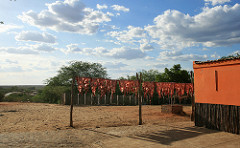

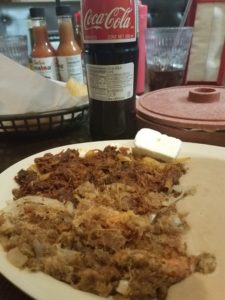
 One of the many foods that are symbolic to me is cinnamon rolls. I have fond memories of eating freshly baked cinnamon rolls dripping with cream cheese frosting many mornings before school throughout my childhood.
One of the many foods that are symbolic to me is cinnamon rolls. I have fond memories of eating freshly baked cinnamon rolls dripping with cream cheese frosting many mornings before school throughout my childhood.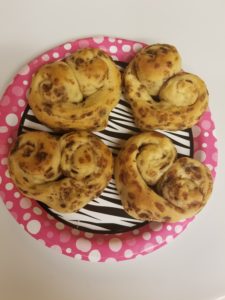


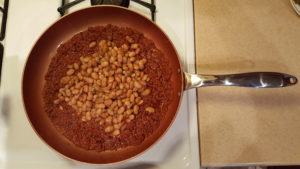
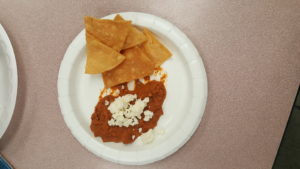


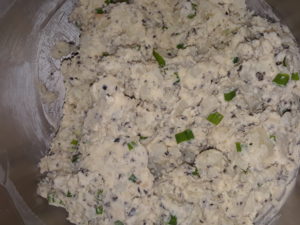

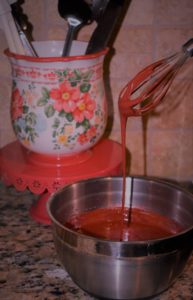


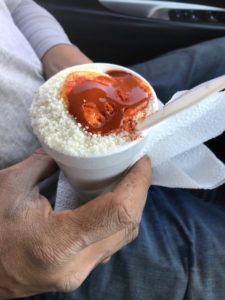 Personally, the corn vendor is my favorite vendor because it carries a symbolic undertone for me. Ironically, the first bond between my first child occurred during pregnancy.The bond was made through food. The first food craving I had while I was pregnant was for corn in a cup (Chaska). Since then, my son and I share this connection. As a matter of fact he loves corn more than I do. He’s eaten corn on a stick since early infancy. He was approximately 10 to 11 months when he first bit into a corn and he’s loved it since. I believe he loves corn more than his father and I.
Personally, the corn vendor is my favorite vendor because it carries a symbolic undertone for me. Ironically, the first bond between my first child occurred during pregnancy.The bond was made through food. The first food craving I had while I was pregnant was for corn in a cup (Chaska). Since then, my son and I share this connection. As a matter of fact he loves corn more than I do. He’s eaten corn on a stick since early infancy. He was approximately 10 to 11 months when he first bit into a corn and he’s loved it since. I believe he loves corn more than his father and I.